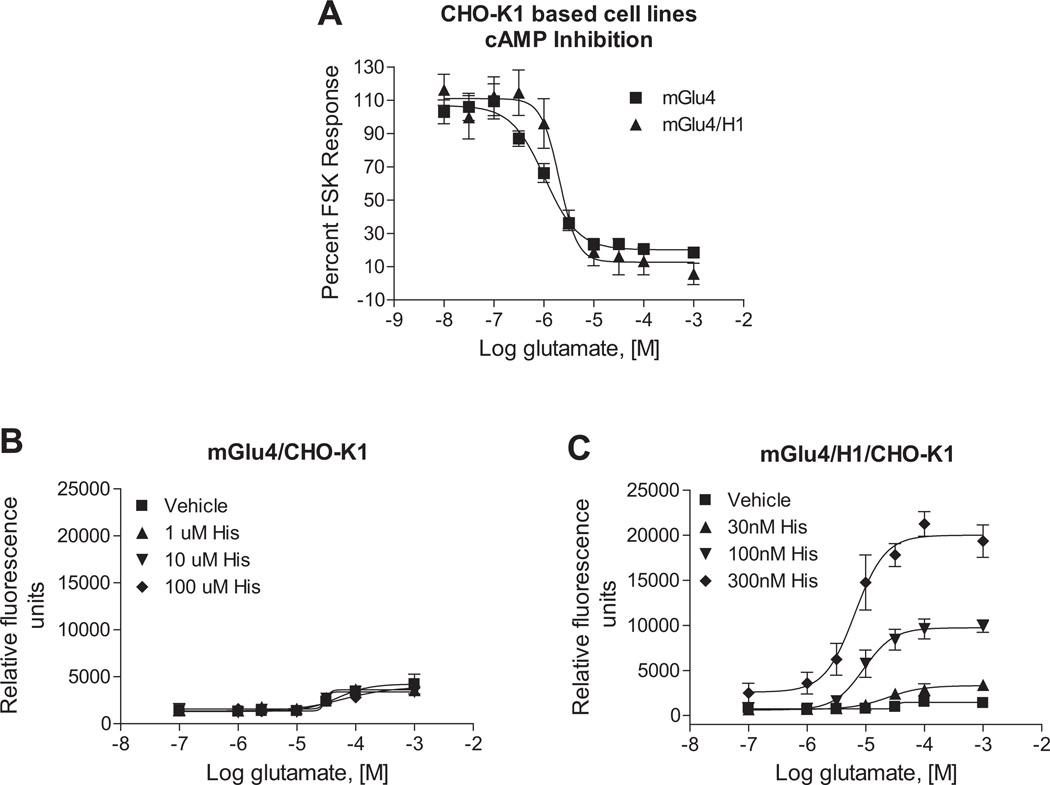Fig. 4.
The histamine H1 receptor is required for the potentiation effect of histamine. A, Glutamate exhibits potencies of 1.0 ± 0.03 µM and 2.3 ± 0.1 µM, respectively, in adenylate cyclase assays in mGlu4/CHO-K1 cells and mGlu4/H1/CHO-K1 cells (*p = 0.0048, unpaired t-test). Intracellular cAMP concentration was measured as described in 2.5. Adenylate cyclase assays and responses were normalized to the 10 µM forskolin response in each cell line, respectively. B, The effect of 1 µM (▲), 10 µM (▼) and 100 mM (◆) histamine on glutamate-induced calcium mobilization in mGlu4/CHO-K1 cells is shown. Maximal responses of vehicle, 1 µM, 10 µM or 100 µM histamine-treated cells were 3391 ± 1033, 3254 ± 841, 3067 ± 527 and 3214 ± 643 relative fluorescence units, respectively (p = 0.99; One-way ANOVA). C, The effect of 30 nM (▲), 100 nM (▼) and 300 nM (◆) histamine in potentiating calcium responses mediated by glutamate in mGluR4/H1/CHO-K1 cells is shown. Maximal responses in vehicle, 30 nM, 100 nM or 300 nM histamine-treated cells were 1548 ± 230, 3390 µ 636, 10099 µ 819, 21261 µ 1356 relative fluorescence units, respectively (*p < 0.0001; One-way ANOVA). Data shown were performed in triplicate; Mean ± SEM. Statistical analysis was performed using GraphPad Prism (La Jolla, CA).

